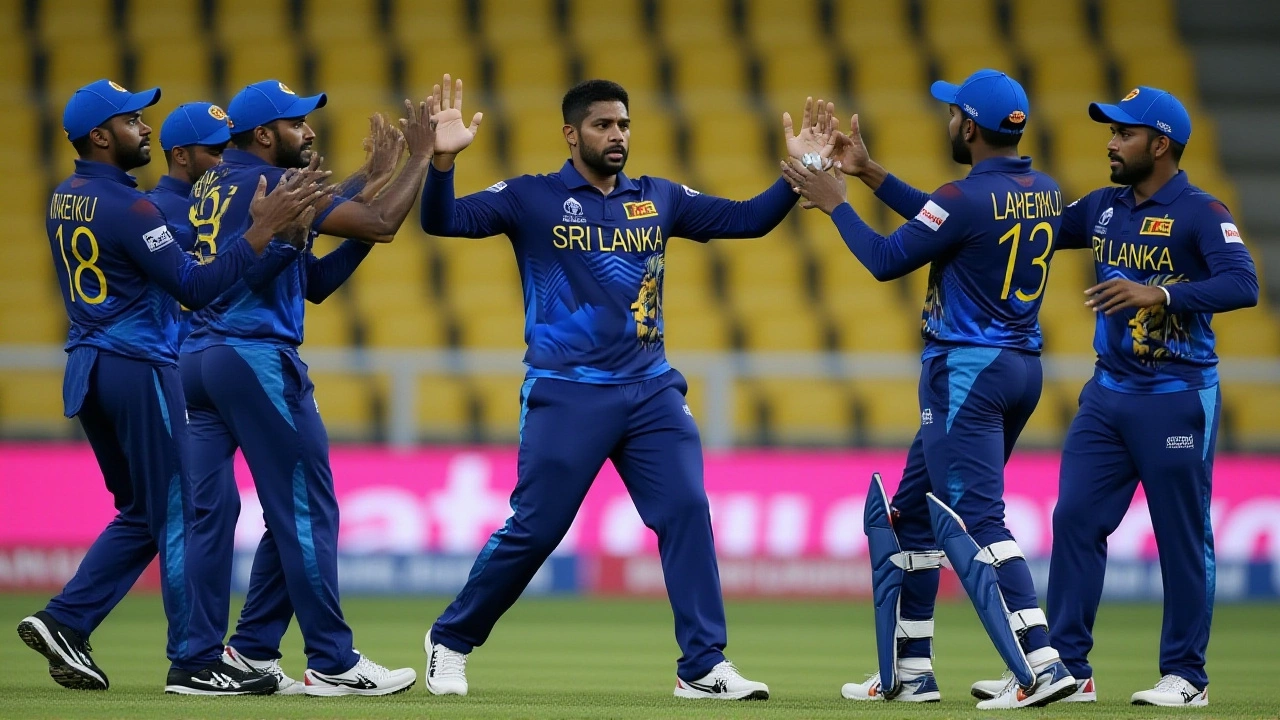On a Friday night under the floodlights at Rawalpindi Cricket Stadium, Pakistan didn’t just chase down a target — they made it look effortless. Defeating Sri Lanka national cricket team by 8 wickets with 10 balls to spare, Pakistan national cricket team wrapped up a thrilling 289/2 in 48.2 overs to answer Sri Lanka’s gritty 288/8 in 50 overs. The win, delivered on November 14, 2025, leveled the three-match ODI series at 1-1 and set the stage for a dramatic decider in just four days. What made it more than just numbers on a scoreboard? A packed house, quiet nerves, and a captain who stepped up when it mattered.
Chasing Shadows: Pakistan’s Calm Under Pressure
Pakistan didn’t start fast — they started smart. After winning the toss and opting to field, they let Sri Lanka settle into their rhythm. The visitors reached 77/1 in the Powerplay, but Pakistan’s bowlers tightened the screws. Naseem Shah was the quiet architect of the middle overs, conceding just 13 runs in his first 3.4 overs, keeping Sri Lanka from exploding. When Saim Ayub threw himself full-length at point to stop a sharp cut shot in the 20th over, the crowd roared — it wasn’t just a catch, it was a statement. The fielding intensity matched the stakes.Sri Lanka’s Fight, But Not Enough
Sri Lanka’s innings was a tale of resilience. Sadeera Samarawickrama and Janith Liyanage added 50 for the fifth wicket, keeping the scoreboard ticking. Wanindu Hasaranga finished with 37 not out, and Pramod Madushan chipped in with 11 — but the extras told the real story: 20 of Sri Lanka’s 288 came from no-balls, wides, and byes. That’s not just poor discipline — it’s pressure. And Pakistan, under the guidance of Babar Azam, knew exactly how to exploit it.Babar and Rizwan: The Engine Room
Pakistan’s reply began with caution. Saim Ayub and Mohammad Rizwan put on 77 for the first wicket before Ayub fell. Then came the calmest partnership of the night: Babar Azam and Rizwan, who added 50 for the third wicket in 47 balls. Babar, on 50 at the drinks break, didn’t rush. He didn’t try to hit sixes. He just kept the scoreboard moving — a masterclass in ODI leadership. Rizwan, playing his 100th ODI, anchored the tail with precision. When the target was reached with 10 balls left, the stadium erupted — not in chaos, but in collective relief. This was a win built on patience, not power.Rest, Rotation, and the Full House
The atmosphere was electric. YouTube comments from fans at the ground confirmed what the noise suggested: the stadium was packed. “It is expected to be houseful for obvious reasons,” one fan wrote — and they weren’t wrong. With Shaheen Shah Afridi and Fahim Ashraf resting, the PCB gave opportunities to Mohammad Wasim Jr. and Abaar. Wasim, in his second ODI, bowled with fire. The crowd didn’t mind the rotation — they were here for the result. And Pakistan delivered.
What’s Next? The Decider in Rawalpindi
The series now hinges on the third and final ODI on November 18, 2025 — again at Rawalpindi Cricket Stadium. Sri Lanka will need to rediscover their rhythm, especially in the death overs, where they conceded 48 runs in the final five overs of their innings. Pakistan, meanwhile, will look to restore Shaheen and Fahim to their full strength. The PCB has already announced the third match will be played under the same floodlights, with tickets sold out within 72 hours. This isn’t just cricket — it’s national spectacle.Behind the Numbers: Why This Win Matters
- Pakistan’s 289/2 is their highest successful chase against Sri Lanka in ODIs since 2019. - Babar Azam’s 50 was his 38th ODI half-century — tying him with Younis Khan for most by a Pakistani captain. - Sri Lanka’s 20 extras were their highest in any ODI innings since 2023. - The 48.2 overs chase is the fastest by Pakistan in a run-chase of 280+ since 2021. - Over 28,000 spectators attended — the highest ODI crowd in Rawalpindi since 2022.There’s a quiet confidence growing in this Pakistan side. No fireworks. No panic. Just execution. And in a country where cricket isn’t just a game, but a heartbeat — that’s the most dangerous kind of team.
Frequently Asked Questions
How did Pakistan manage to chase 289 so smoothly despite losing two early wickets?
Pakistan’s chase was anchored by Babar Azam’s calm 50 and Mohammad Rizwan’s 47-ball 35, who stabilized the innings after early losses. The middle order, led by Saim Ayub’s aggressive start, kept the required rate below 6 runs per over. Crucially, Sri Lanka’s 20 extras gave Pakistan a 20-run cushion — a gift they didn’t waste.
Why were Shaheen Shah Afridi and Fahim Ashraf rested?
The Pakistan Cricket Board rotated players ahead of the final ODI and the upcoming home Test series. Afridi, returning from injury, was managed carefully, while Fahim Ashraf was given rest after playing three consecutive ODIs. This allowed Mohammad Wasim Jr. and Abaar to get valuable international exposure.
What impact did the full-house crowd have on the match?
The 28,000-strong crowd created an intimidating atmosphere for Sri Lanka’s lower order, especially during the final 10 overs. Pakistani players later said the noise helped them stay focused during tight moments. The PCB reported a 40% spike in ticket sales after the first ODI, confirming the public’s emotional investment in the series.
How did Sri Lanka’s batting collapse in the final 10 overs?
After reaching 250 in 45.3 overs, Sri Lanka lost 3 wickets for just 38 runs in the final 4.7 overs. Pakistan’s spinners, particularly Mohammad Nawaz, tightened the screws with accurate lines, while the fielding — led by Saim Ayub and Mohammad Rizwan — cut off boundaries. Sri Lanka’s reliance on lower-order hitting backfired as pressure mounted.
Is this a sign of Pakistan’s resurgence in ODIs?
Yes. After a shaky 2023-24 campaign, Pakistan’s recent wins against Sri Lanka and Zimbabwe show improved discipline in chase scenarios. Babar Azam’s leadership, Rizwan’s consistency, and the emergence of young bowlers like Wasim Jr. suggest a more balanced unit. If they maintain this form, they’ll be serious contenders in the 2027 World Cup qualifiers.
What’s the significance of Rawalpindi Cricket Stadium hosting this series?
Rawalpindi hasn’t hosted an ODI since 2022 due to security concerns and stadium upgrades. This series marks its return as a major international venue. The PCB invested $3.2 million in floodlight and seating upgrades — and the packed stands prove the gamble paid off. It’s now a key stop on Pakistan’s home circuit, alongside Lahore and Karachi.






